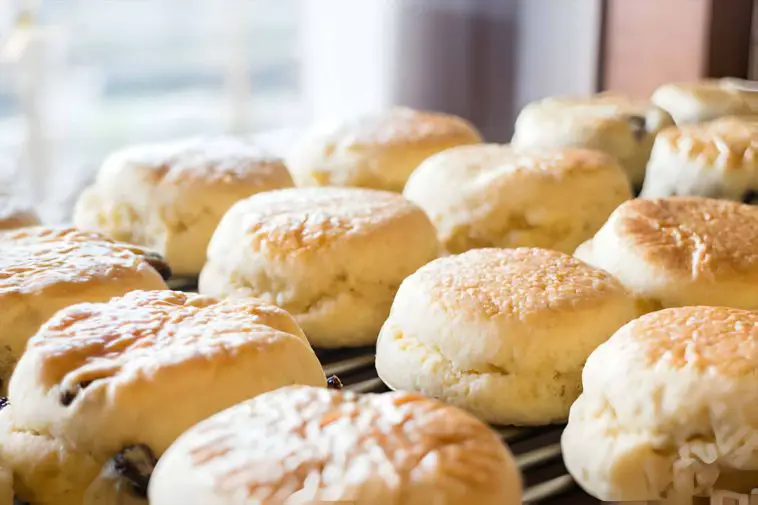Biscuits hold a special place in the hearts of many, symbolizing comfort and warmth. This guide will walk you through the steps to bake the best biscuits, ensuring they turn out light, flaky, and utterly delicious every time.
Understanding Biscuits
Introduction to Biscuit Baking
Biscuits, a culinary staple with a rich history, have evolved from simple bread alternatives to beloved treats worldwide. Their popularity spans various cultures, each adding a unique twist to the basic recipe. Mastering biscuit baking is not just about following a recipe; it’s an art that combines tradition with personal touch. Whether served as a side, a breakfast staple, or a dessert base, biscuits hold a special place in the culinary world. Learning to bake the perfect biscuit is a rewarding skill, offering a comforting, homemade treat that’s both versatile and delicious.
Choosing the Right Ingredients
The secret to exceptional biscuits lies in selecting the right ingredients:
- Flour: The choice between all-purpose flour and Southern-style soft flours like White Lily can significantly affect the texture. All-purpose flour offers versatility, while soft flours provide a lighter, more tender crumb.
- Fats: The type of fat used, whether butter, lard, or shortening, impacts the flavor and texture. Butter offers a rich taste and aids in leavening, while lard and shortening contribute to the flakiness.
- Liquids: Options like milk, buttermilk, and cream each lend different qualities to biscuits. Buttermilk adds a tangy flavor and tenderizes the dough, while milk and cream offer varying degrees of richness.
- Leavening Agents: Freshness is crucial for baking powder, the common leavening agent in biscuits. It’s essential to ensure it’s active for the biscuits to rise properly.
The Science Behind Perfect Biscuits
Understanding the science behind biscuit ingredients is key to achieving the desired texture and flavor:
- Gluten: The gluten in flour contributes to the biscuit’s structure. However, too much gluten development can make biscuits tough, so minimal handling is crucial.
- Fats: Fats like butter not only add flavor but also create layers in the dough, contributing to the biscuit’s flakiness. The melting fat during baking creates steam, which helps in leavening.
- Liquids: The type of liquid used affects the biscuit’s tenderness. Buttermilk, for instance, can tenderize the dough more effectively than regular milk due to its acidity.
- Temperature: The temperature of ingredients plays a significant role. Cold fats and liquids help in creating a flaky texture, as they prevent the fat from blending too much into the flour.
Essential Biscuit-Making Tools
While specialized tools can enhance the biscuit-making process, a few basic tools are essential:
- Baking Sheets: A good quality baking sheet ensures even baking and browning.
- Cutters: Sharp biscuit cutters are crucial for clean cuts that promote even rising.
- Mixers: While not necessary, mixers can help in evenly combining ingredients without overworking the dough.
For those without these tools, simple substitutes like a sharp knife for cutting and a bowl and spoon for mixing can suffice. The key is to handle the dough gently and minimize gluten development for tender biscuits.
Preparing the Dough
The technique in preparing biscuit dough is as important as the ingredients:
- Mixing: Combine the dry and wet ingredients until just mixed. Overmixing can lead to tough biscuits.
- Handling: Handle the dough as little as possible. Overworking the dough activates the gluten, making the biscuits tough.
- Resting: Allow the dough to rest before rolling and cutting. This step relaxes the gluten, resulting in a more tender biscuit.
- Rolling: Roll the dough to an even thickness, ensuring uniform baking and texture.
By following these steps, you can create a biscuit dough that’s ready to be shaped and baked into golden, flaky delights.
Baking and Serving
Rolling and Cutting Techniques
Achieving the perfect thickness and shape is crucial in biscuit making. Roll the dough to about 3/4 inch thickness for optimal rise and texture. When it comes to shapes, traditional round biscuits are popular, but squares or other shapes can be just as delightful and often more efficient, reducing dough waste. Use a sharp cutter for rounds to ensure clean edges that rise evenly. For squares, a knife or a pizza cutter works well. Remember, the key is consistency in thickness and shape for uniform baking.
Baking Tips for the Best Outcome
The secret to perfectly baked biscuits lies in the oven temperature and placement. Preheat your oven to the recipe’s specified temperature, typically between 400°F to 450°F. This high heat is essential for the rapid expansion and browning that gives biscuits their characteristic texture and flavor. Place the biscuits on the middle rack to ensure even heat distribution. Use a light-colored baking sheet to prevent the bottoms from burning. Monitor the biscuits closely towards the end of the baking time; they should be golden brown on top and bottom when done. Remember, oven temperatures can vary, so it’s important to know your oven and adjust accordingly. A trial batch might be necessary to find the perfect baking time and temperature for your specific oven.
Serving Suggestions
Biscuits are incredibly versatile and can be served in numerous ways. Pair them with savory gravies for a classic comfort meal, or use them as a base for a hearty breakfast sandwich. For a sweeter option, biscuits can be topped with jam, honey, or used in shortcakes with fresh fruit and whipped cream. Get creative by incorporating herbs or cheese into the dough for a flavorful twist. Biscuits can also be a delightful side for soups and stews, soaking up the flavors while adding a comforting element to the meal.
Storing and Reheating Biscuits
To maintain the freshness of biscuits, store them in an airtight container at room temperature for up to two days. For longer storage, freeze them in a sealed bag or container for up to three months. When reheating, avoid the microwave as it can make them soggy. Instead, reheat in a preheated oven at 350°F for about 10 minutes or until warm. This method helps retain the biscuit’s texture, ensuring they remain as delightful as when first baked. If frozen, there’s no need to thaw; simply extend the reheating time by a few minutes.
Common Mistakes to Avoid
Avoid these common pitfalls to ensure biscuit perfection:
- Overworking the Dough: Handle the dough gently. Overmixing or excessive kneading activates gluten, leading to tough biscuits.
- Incorrect Baking Temperatures: Baking at too low a temperature won’t give biscuits their characteristic rise and can result in them being dense. Conversely, too high a temperature can cause them to burn before they’re cooked through.
- Opening the Oven Frequently: Resist the urge to frequently open the oven door, as this can cause temperature fluctuations that affect the rise and texture of the biscuits.
FAQs
Can I make biscuits ahead of time and refrigerate or freeze the dough?
- Yes, you can prepare the dough ahead and store it in the refrigerator for a short period or freeze for longer storage.
What’s the best way to reheat biscuits?
- Reheat in an oven at 350°F.
Can I substitute ingredients in biscuit recipes?
- Yes, but be aware that substitutions can alter the texture and flavor.
Why did my biscuits turn out flat?
- This could be due to overworking the dough, expired leavening agents, or incorrect oven temperature.
In conclusion, baking the perfect biscuit is an art that combines the right ingredients, techniques, and a bit of science. By following these guidelines, you can achieve light and fluffy biscuits that are sure to delight. Remember, practice makes perfect, so don’t be afraid to experiment and find your perfect biscuit recipe. Happy baking!





Comments
Loading…